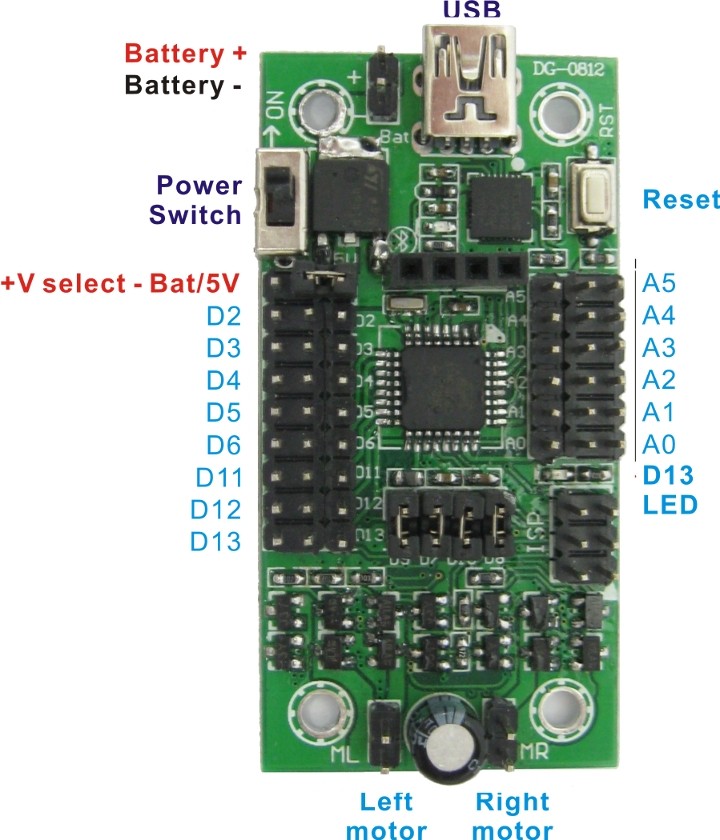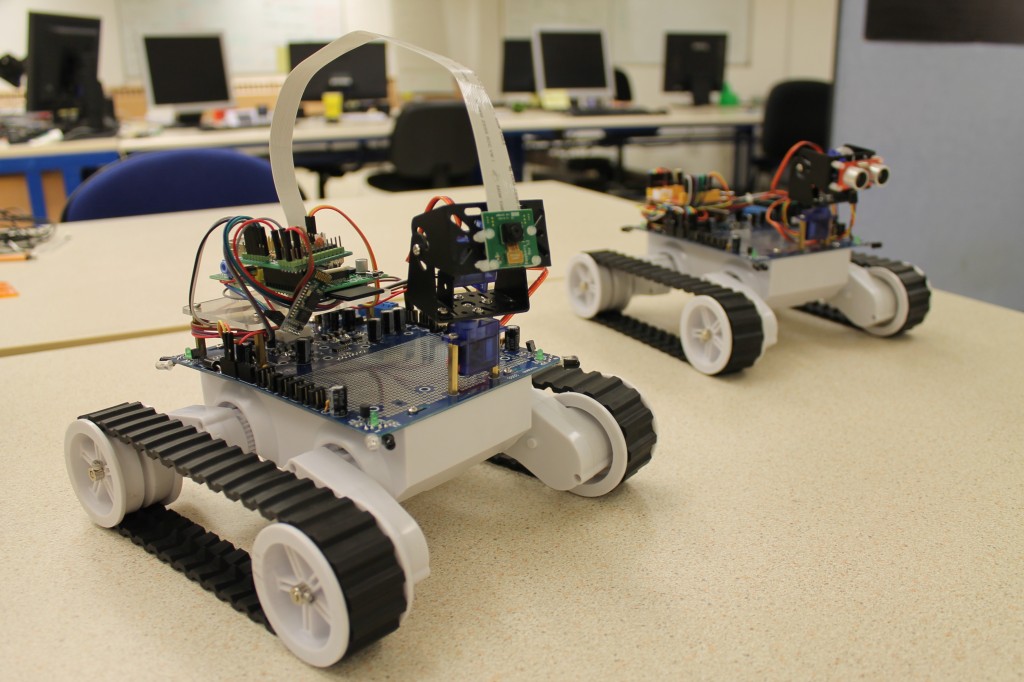Welcome to the second part of our series of posts, describing the workshop we ran at the recent Digimakers event at @Bristol. In the last post we described the outline of the workshop and looked at the hardware of the Raspberry Pi robot that we built for the event. In this post we describe the software running on the robot, and how we set it up. Hopefully this post will give some useful ideas for those wanting to set up their own Raspberry Pi robot.
Monthly Archives: November 2013
Talking to a Bluetooth Serial Module with a Raspberry Pi
Bluetooth is a very low cost and flexible way to add wireless communication to your projects. However, it can also be a bit tricky to set up. In this post we show you how to set up a Raspberry Pi with a USB Bluetooth dongle so that it can communicate with an Arduino using a Bluetooth serial module.
Once the set up is complete, we’ll have a new serial port on the Raspberry Pi that can be used to communicate with the serial Bluetooth module, either using a program such as Cutecom, or using one of the many serial programming libraries such as pySerial. Continue reading
Building a Raspberry Pi Robot and Controlling it with Scratch – Part 1
Last weekend we ran a workshop at the Digimakers event at @Bristol where we taught people how to program a Raspberry Pi robot with the Scratch programming language. It went really well, and it was amazing to see kids as young as 7 grasp the basics of robot control, and produce some really good control programs. Quite frankly, our careers are obviously in jeopardy once they reach the jobs market. ![]()
This is the first in a series of posts where we describe the basics of how we built the robot, programmed it and put on the workshop. All of the workshop code, and the workshop worksheet can be found here if people are interested in recreating our work.
Getting Started with the Dagu Arduino Mini Driver Board
If you want an affordable way to drive DC motors, to control servos, and to add an ADC to your project, then the Dagu Arduino Mini Driver Board could be well worth a look. It can be hooked up to a Raspberry Pi with a USB cable to provide the hardware interface for a Pi project. Or alternatively, it can be used alone as a much smaller, and cheaper alternative to an Arduino with a motor shield.
Documentation is a bit thin on the ground for this board however, so we thought we’d put together a simple getting started guide, and show you how you can use the Mini Driver to control some motors.
Continue reading
Early Work on a Raspberry Pi Rover Kit
We’re going to be running a workshop at the forthcoming Digi Makers @ Bristol event showing people how they can control a robotic rover with Scratch. So we thought we’d share a picture of the Raspberry Pi robot we’ll be using for the event.
The Dagu Explorer PCB which we use to drive the motors on the Rover 5 chassis has a 5V voltage regulator which is rated at 1.5A so we can use that to provide power to the Pi. Not 100% sure yet how well it will cope with both WiFi and when the motors are running at 100%, but it seems very stable with the hardware we’re using for the workshop which is the Raspberry Pi camera and a bluetooth dongle.
Ideally we’d like to develop this into a full blown Raspberry Pi robot kit that we can sell alongside our Seeeduino/Arduino based robot kit, but we’re focussed on delivering a good workshop first. ![]()


